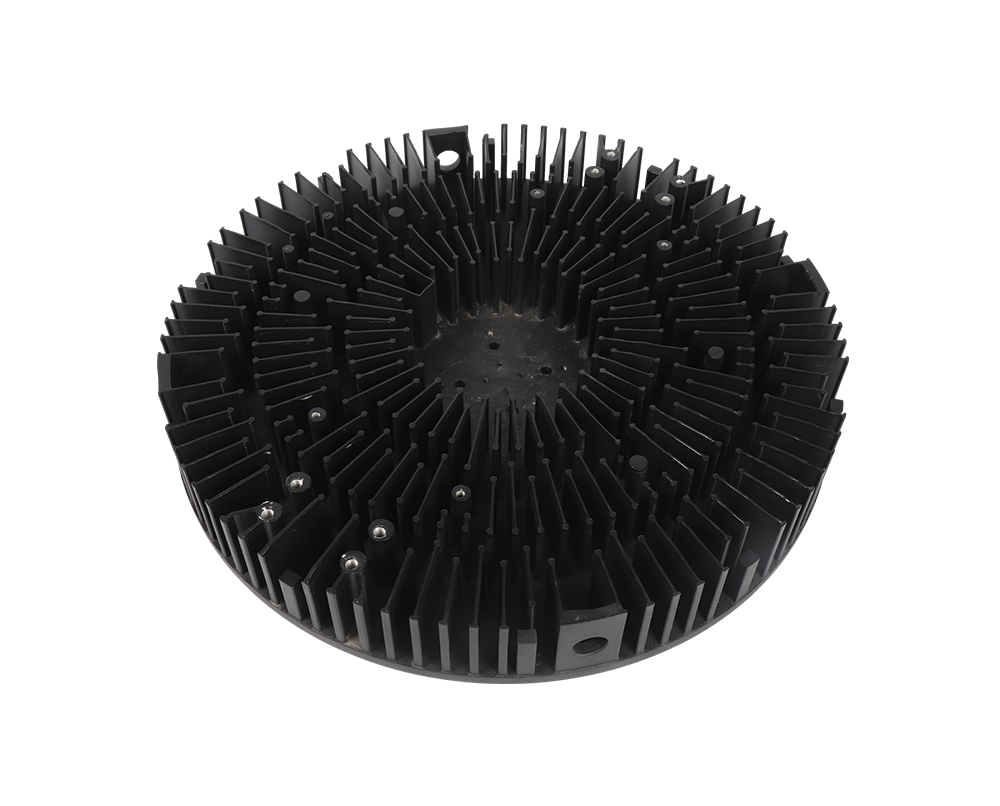2024-01-11 hits:0 source:News

Die cast aluminum alloy has good performance and process performance, so it has developed rapidly and is widely used in various industrial fields. Its usage is much higher than other non-ferrous alloys, and it plays an extremely important role in die casting production. However, aluminum alloy die castings are often scrapped due to the presence of pores, and there are many reasons for the formation of pores. How to quickly and correctly take effective measures to reduce the scrap rate caused by pores is a concern for various manufacturers. The generation of pores during the production process is mainly caused by the following factors:
1. Pores generated by poor refining and degassing
In the production of aluminum alloy die-casting, the pouring temperature of aluminum liquid is generally between 610-660 ℃. At this temperature, a large amount of gas (mainly H2) is dissolved in the aluminum liquid. The solubility of hydrogen is closely related to the temperature of the aluminum liquid. The solubility of hydrogen in aluminum liquid is about 0.69cm3/100g at around 660 ℃, and it is only 0.036cm3/100g in solid aluminum alloy at around 660 ℃. At this time, the hydrogen content in the liquid aluminum liquid is about 19 times that of the solid. So when aluminum alloy solidifies, a large amount of hydrogen precipitates in the form of bubbles in aluminum alloy die castings.
2. Pores generated by improper die-casting parameters
During the aluminum liquid die-casting process, if the filling speed is too fast, the gas in the cavity cannot be completely discharged in a timely and stable manner, and is trapped in the solidified aluminum alloy shell, forming large pores. This type of porosity is often pear shaped or elliptical below the surface of the workpiece. For such pores, the filling speed should be adjusted to ensure that the aluminum alloy liquid flow advances smoothly and does not produce high-speed flow and entrainment.
3. Pores caused by poor exhaust
In aluminum alloy die-casting, due to the poor exhaust channel of the mold and the poor design of the mold exhaust structure, the gas in the mold cavity cannot be completely discharged smoothly during die-casting, resulting in the presence of pores in certain fixed parts of the product. The pores formed by the gas in the mold cavity vary in size, and the inner wall of the pores presents an oxidation color of aluminum and air oxidation. Unlike the pores produced by hydrogen gas precipitation, the inner wall of the hydrogen gas precipitation pores is not as smooth as the air pores, without oxidation color, but rather a gray bright inner wall. For air holes caused by poor exhaust, the exhaust channel of the mold should be improved, and residual aluminum skin on the exhaust channel of the mold should be cleaned in a timely manner to avoid them.
4. Pores caused by excessive difference in product wall thickness
The product shape often has a problem of excessive wall thickness difference. In the center of the wall thickness, it is the place where the aluminum liquid finally solidifies and is also the most prone to producing pores. These pores at the wall thickness are a mixture of precipitation pores and shrinkage pores, which are difficult to prevent with general measures. When designing the shape of the product, consideration should be given to minimizing uneven or excessively thick wall thickness, adopting a hollow structure. In mold design, consideration should be given to adding core pulling or cold iron, or water cooling, or increasing the cooling speed of the mold at this point. In die casting production, attention should be paid to the undercooling of thick parts, and the pouring temperature should be appropriately reduced.
Read recommendations:
Optimization Design of Common Alloy Die - Casting Molds
Applications of Pure Aluminum Die-Casting in Robot Manufacturing
lf you have any questions or comments, you can leave us a message and we will reply to you as soon as possible
